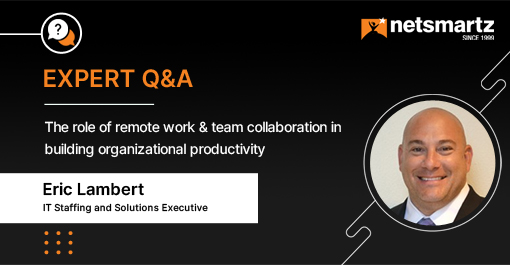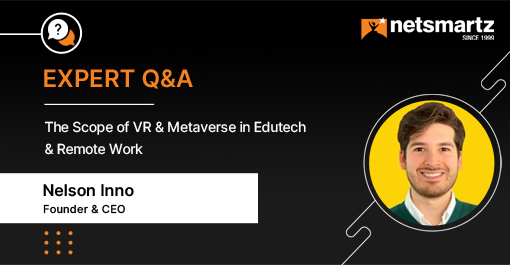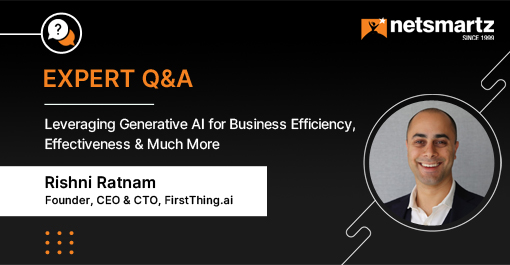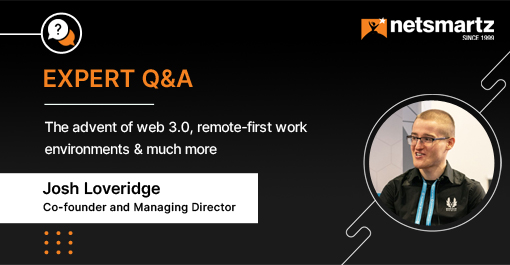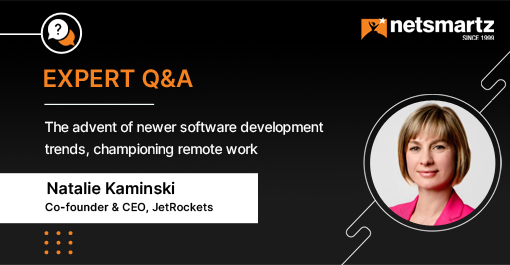Business Implications of ChatGPT, Newer IT Trends & Much More

Edge computing, AI and cloud computing are just a few of the latest trends that are poised to revolutionize the IT industry in 2023.
Along with that, remote work and distributed teams are expected to become a permanent fixture in the software industry.
To understand the scope of it all and what we should expect next, especially with the rise of ChatGPT, we got in touch with Rajat Budhiraja to learn his insights.
Want to contribute to our expert insights?
Contact Us About Rajat Budhiraja
About Rajat Budhiraja
Rajat is an organizational leader, entrepreneur and technocrat with a strong and proven track record of driving business, spearheading digital transformation programs, leading global strategic partnerships, scaling operations, and program management across a broad spectrum of consulting and IT services across COTs and SaaS platforms.
He is a Business Strategist for customer acquisition and brand positioning. He has bagged and delivered the first $100 million deal for his organization. He has successfully achieved aggressive growth plans of more than 400% in a mere 2 years and increased the win ratios by 55%.
1. What upcoming trends do you see making a mark in the industry – unseemly or exciting – that might transform the IT industry for good?
Several trends are expected to make a significant impact on the IT industry in the coming years, some of which are exciting and others disruptive: 1. The ever-evolving field of Artificial Intelligence (AI) is transforming the way businesses operate and is expected to become even more prevalent shortly. 2. Edge Computing is becoming increasingly important due to the rapid growth of IoT devices and the need for low-latency processing. 3. The roll-out of 5G technology is expected to have a major impact on the IT industry by providing faster and more reliable connectivity for IoT devices and enabling new applications and use cases. 4. Cloud Computing continues to be a major driver of innovation and growth in the IT industry and is poised to play an even larger role in the future. 5. With the increasing number of cyber threats, Cybersecurity will remain a key concern for businesses and governments alike. 6. Automation and Robotics are expected to significantly improve efficiency and enable new business models in the IT industry. 7. Quantum Computing has the potential to revolutionize many industries, including IT, and is expected to have a major impact in the years to come. These trends are likely to have a transformative impact on the IT industry, and it will be exciting to see how they evolve and mature over time.2. With the software industry right now, what change do you see sticking? a. Perhaps a comment on remote work and distributed teams b. Perhaps a comment on hiring shifts c. Perhaps a comment on hybrid working models
The COVID-19 pandemic has brought about significant changes in the software industry, with remote work and distributed teams becoming more prevalent. As the world adapts to the new normal, it is important to consider the lasting impact of these changes on the industry. Based on current trends, remote work and distributed teams are likely to continue to play a major role in the software industry. Remote work has been a successful solution for many organizations, allowing them to maintain operations while prioritizing employee health and safety. Additionally, employees have demonstrated equal productivity in remote work, making it a desirable option for both employers and employees. Distributed teams, on the other hand, have allowed organizations to tap into a wider pool of talent, making it possible to build diverse and global teams. The hybrid model of working has had a significant impact on the hiring strategies of software companies enabling them to widen the talent pool, place a greater emphasis on soft skills and technology requirements, and create a more diverse and inclusive workforce. Furthermore, the growth of remote work and distributed teams has sparked the development of new technologies and services designed to support these work arrangements. This trend is expected to continue as companies search for ways to optimize remote work and distributed teams. To sum up, remote work and distributed teams are expected to become a permanent fixture in the software industry, creating new opportunities for organizations and employees. It will be fascinating to observe their evolution and development in the coming years.3. Do you think distributed teams can bring the same level of collaboration and competence as on-site teams?
Distributed teams can bring the same level of collaboration and competence as on-site teams, but it requires intentional effort and the right tools and processes. Here are a few factors that can help ensure the success of a distributed team: 1. Clear communication: Regular and clear communication is crucial for remote teams to stay connected and on the same page. This can be achieved through video conferencing, check-ins, and shared project management tools, ensuring effective communication. 2. Strong leadership: Distributed teams need strong leadership to provide direction, support, and accountability. Leaders need to set clear expectations, provide regular feedback, and ensure that everyone has the resources they need to be successful. 3. Trust and autonomy: Remote teams need a high level of trust and autonomy to be successful. This involves trusting each other to complete work and be accountable for results and giving team members the freedom to make decisions and take action, building trust and autonomy. 4. Collaborative technology: The right technology is necessary to support collaboration, communication, and shared decision-making for remote teams. This includes video conferencing, project management tools, and collaboration platforms that enable real-time work, using appropriate technology. 5. Processes and protocols: Clear processes and protocols are necessary for remote teams to work effectively. This includes decision-making, problem-solving, and conflict resolution procedures, as well as communication and collaboration protocols, defining defined processes and protocols. With the right leadership, technology, and processes in place, distributed teams can bring the same level of collaboration and competence as on-site teams. However, it takes effort and attention to make this happen, and companies need to be intentional in their approach to supporting and managing distributed teams. Though I would like to meet and work with my teams in person as often as I can4. A lot of tech evangelists have voiced their thoughts on ChatGPT and its business implications. What are your thoughts on the same?
GPT-3, or Generative Pretrained Transformer 3, is an advanced language generation model developed by OpenAI. It can generate text based on a given prompt and can perform a wide range of language tasks such as translation, question answering, and text summarization. GPT3 is positively impacting many businesses, some of which include: 1. Improved Customer Service: Integrating GPT-3 into customer service systems can enhance the speed and accuracy of responses to customer inquiries, resulting in an improved customer experience and reduced support costs for businesses. 2. Accelerated Learning: ChatGPT is useful for learning about new topics. It can provide a concise summary or explain complex ideas in simpler terms. Unlike just reading a Wikipedia page, ChatGPT remembers previous interactions and can handle follow-up questions to delve deeper into the topic. Although it is a great way to get a quick primer on a subject, it’s important to fact-check the information provided by ChatGPT. 3. Automated Content Creation: Automating the process of creating high-quality content such as articles, blog posts, and social media updates can be achieved through the use of GPT-3. This can result in significant time and resource savings for businesses while also enabling them to stay ahead of the content creation curve. 4. Code Snippets: Software developers and data scientists often have multiple tabs open in their browsers, with many of them directed to Stack Overflow, a crowd-sourced tool where individuals share solutions to coding problems. The reason for this is that nobody can remember all of the syntaxes for every function in every programming language they use. ChatGPT has learned from Stack Overflow and similar sites, enabling it to generate effective code examples that can be utilized in projects. However, caution must be exercised when utilizing ChatGPT in this manner, as sharing proprietary source code with OpenAI is not recommended. Therefore, it is not advisable to submit a block of code to ChatGPT and ask it to detect the bug’s source, as this will provide OpenAI access to the source code. 5. Streamlined Workflows: GPT-3 can be integrated into various business processes such as data entry, report generation, and document creation, to automate repetitive tasks and streamline workflows. 6. Enhanced Business Intelligence: By integrating GPT-3 into various business processes, such as data entry, report generation, and document creation, organizations can automate repetitive tasks and streamline workflows. This not only saves time and resources but also reduces the risk of errors and improves overall efficiency. 7. New Business Opportunities: GPT-3 has the potential to unlock new business opportunities by enabling the creation of innovative products and services that were previously unfeasible. Overall, GPT-3 has the potential to significantly impact businesses across a variety of industries by improving efficiency, reducing costs, and enabling new opportunities for growth and innovation. Wrapping Up
Wrapping Up
As we can infer from above, AI, edge computing and cloud computing are just a few of the contenders poised to revolutionize the tech space.
We also have remote work that is expected to stay in vogue for the long run due to its positive business impact.
Rajat also shines a special light on the power of ChatGPT, especially GPT-3 and its business implications.
To wrap it up, 2023 is going to be a whirlwind and we’re here for it!

Are You An Influencer?
Make Your Mark as a Thought Leader
We invite industry influencers to participate in our Q&A panel, offering the audience valuable insight into cutting-edge technology trends, platforms, and more.













